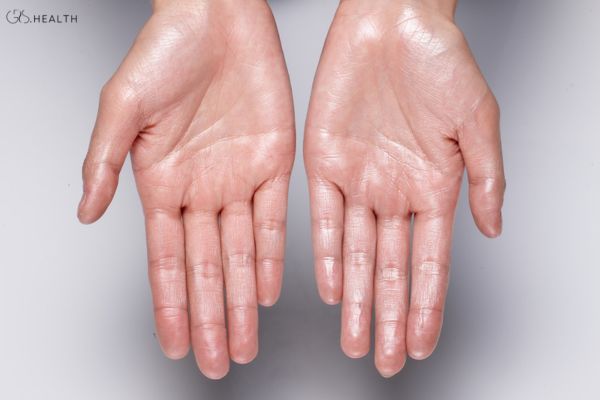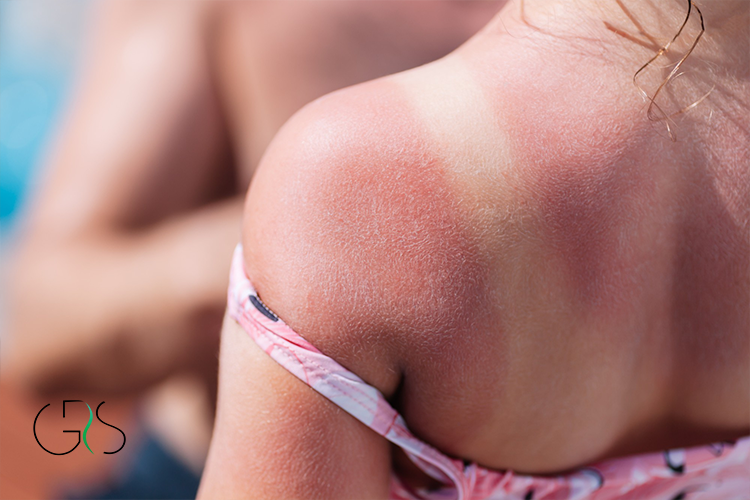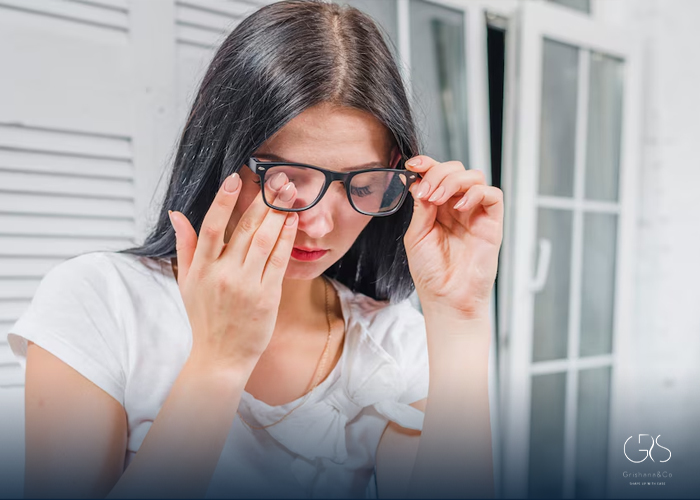Compression socks have become increasingly popular in recent years, with many athletes and individuals with various health conditions turning to compression socks to improve their circulation, decrease swelling, and reduce pain. Compression socks are specially designed socks that apply pressure to your legs to help improve blood flow. These socks come in various sizes, materials, and levels of compression. They can be worn during exercise, daily activities or while sitting or standing for extended periods.
In this article, we will look at the 5 benefits of wearing compression socks, how to use compression socks and other considerations, whether compression socks work, and if there are any downsides to wearing them.
What Are Compression Socks?
Compression socks are a specialized type of sock designed to apply pressure to your legs, ankles, and feet to help improve blood flow. They are typically worn by athletes and individuals who have certain health conditions affecting blood flow to their legs. Compression socks aid circulation by promoting healthy blood flow from your legs back to your heart and help to prevent clots from forming in your veins.
Compression socks come in different levels of pressure measured in millimeters of mercury (mmHg), with most offering between 15-30 mmHg of compression. These levels of compression are used to meet different needs, ranging from mild compression for comfort, to moderate pressure for blood clot prevention, to high pressure for medical conditions.
Uses of Compression Socks
Compression socks are used to help improve circulation, especially in people with venous disorders such as venous insufficiency (weakness in the vein valves). They play an important role in preventing blood from pooling in the legs and feet, which can lead to swelling, achiness, and varicose veins.
Compression socks also help people who are at risk of developing blood clots in their legs, like those who have recently undergone surgery, are confined to bed, or have a family history of blood clots. Additionally, they are beneficial to people who stand or sit for long periods as they help in reducing swelling in the legs.
Apart from medical benefits, compression socks have gained interest from athletes, as they can help in improving their performance and aid in recovery. Many athletes wear compression socks during and after workouts to improve their circulation and reduce soreness.
Boosting Circulation
Compression socks work by applying pressure to the veins and muscles in the feet and calves, which helps in improving circulation, and aids in the transportation of deoxygenated blood from the legs back to the heart. Healthy blood flow is essential for maintaining overall health, reducing fatigue, and reducing the risk of blood clots. Compression socks maintain pressure on the leg, which helps in keeping the blood flow constant.
A 2019 study found that compression socks can significantly improve blood circulation in healthy adults, as well as those with peripheral artery disease (PAD). The study found that compression socks increased blood flow velocity in the arteries of the lower legs by 36% and decreased the time it took for blood to be pumped from the heart to the feet. The results were even more pronounced in individuals with PAD.
Decreasing Swelling and Reducing Pain
One of the main reasons people wear compression socks is to decrease swelling and reduce pain. Compression socks help in reducing the accumulation of lymphatic fluid and reducing swelling in the legs. They work by decreasing the size of the veins and increasing the amount of lymphatic fluid that is absorbed into the body’s tissues.
A 2015 study published in the Journal of Aging Research found that wearing compression socks for just six weeks can significantly reduce leg pain and swelling in older individuals. The study participants who wore compression socks had lower levels of discomfort, and the size of their swollen ankles decreased by 2.5 centimeters.
Preventing Dizziness Upon Standing
Compression socks can also help in the prevention of dizziness upon standing. Orthostatic hypotension (low blood pressure when standing), affects older adults and people with certain medical conditions. Wearing compression socks helps in reducing the pooling of blood in the legs, which, in turn, prevents a drop in blood pressure, and reduced dizziness upon standing.
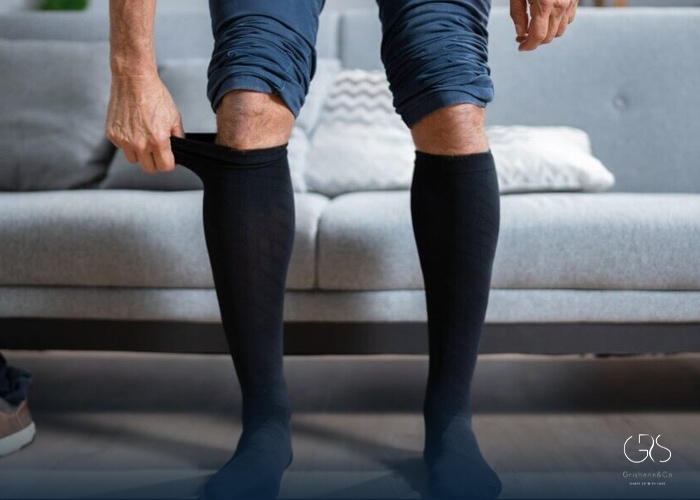
Improving Exercise Performance
Many athletes and fitness enthusiasts swear by compression socks’ effectiveness in boosting exercise performance. Compression socks are thought to provide various benefits to athletes, including reduced soreness, improved endurance, and increased oxygen uptake.
Studies have shown that wearing compression socks during or after exercise could lead to faster recovery, reduced muscle soreness and increased endurance. A 2016 study found the use of compression socks has shown an improvement in measure of power, vertical jump height, and anaerobic threshold following maximum test.
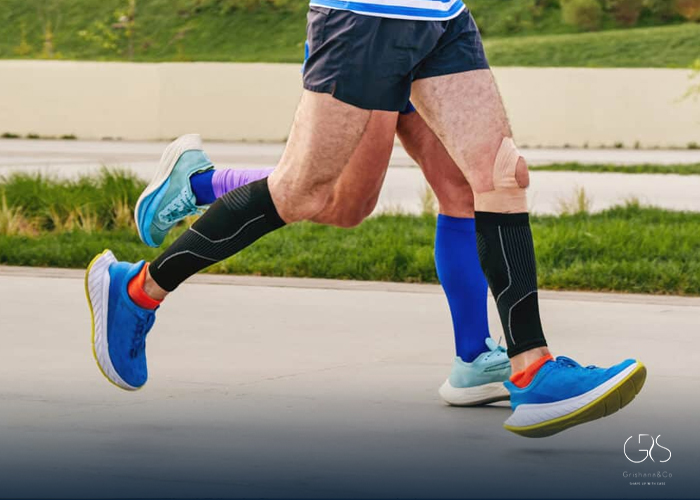
Do Compression Socks Work?
Compression clothing has become increasingly popular in recent years in both athletic and medical communities. According to the American College of Cardiology, compression socks may be helpful in treating common vein conditions like chronic venous insufficiency, varicosities, and deep vein thrombosis. They can also help people who are on their feet for long periods as they help in the reduction of swelling.
Several studies have shown the effectiveness of compression socks in boosting circulation, reducing pain and swelling, and improving exercise performance. A 2021 randomized controlled study found that higher levels of compression in compression footwear would reduce peak plantar pressure.
Are There Downsides to Wearing Compression Socks?
Overall, compression socks are a safe option for many people. However, people with certain medical conditions should avoid using compression socks. These include people with arterial insufficiency, skin infections, or allergies to the materials used in compression socks.
Additionally, people with diabetes should avoid using compression socks unless otherwise directed by their doctor as they might interfere with circulation. Some individuals may find compression socks uncomfortable to wear and have an allergy to the materials used in their production.
How to Use Compression Socks and Other Considerations
If you’re considering trying compression socks, speak with your doctor first. They can help determine whether compression socks are appropriate for your individual needs and advise you on the right pressure setting for you. Secondly, ensure that you get the right size by taking the measurements of your calf, ankle, and feet before purchasing your compression socks.
Some users claim that they are comfortable to wear overnight while sleeping, but it’s best to seek your doctor’s advice before doing so. It is recommended to wear compression socks for up to 12 hours a day as per the instructions of your doctor.
Conclusion
There are many benefits to wearing compression socks. They help to boost circulation, decrease swelling, and reduce pain, prevent dizziness upon standing, and improve performance during exercise. Compression socks have been proven to be highly effective in several studies, making them a popular choice for athletes and individuals with venous disorders.
However, it is essential to speak with a medical professional and ensure that you get the right size and level of compression for your unique needs. Compression socks can have contraindications and may not be safe for people with certain medical conditions. Always consult a medical professional before using compression socks.
Sources
- CDC, Deep Vein Thrombosis & Pulmonary Embolism
- Mayo Clinic, rthostatic hypotension (postural hypotension)
- Harvard Health, Boosting circulation with compression stockings
- National Library of Medicine, Effects of vacuum-compression therapy on healing of diabetic foot ulcers: randomized controlled trial



